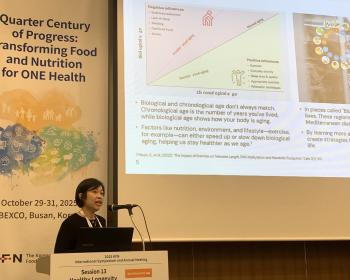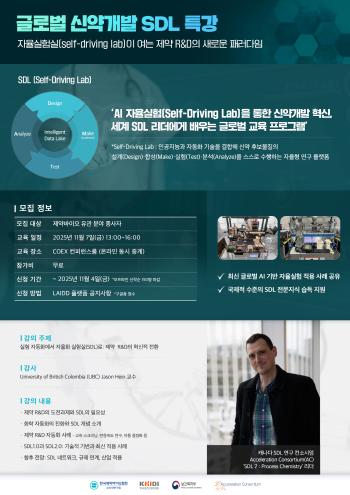Depression in Children and Adolescents has increased by 76% in 5 years...Don't miss out on children's signals
Apr 14, 2025
|
In March, as the new semester begins, our children meet new schools, classes, and friends. Children during this period are exposed to unfamiliar situations while feeling nervous and excited at the same time, but as they gradually explore their surroundings, they adapt to changes in their studies and friendships. But there are many children who are happy to see the new semester. They are children experiencing childhood and adolescent depression.
In Korea, childhood and adolescent depression has begun to attract attention relatively recently, but it is showing a rapid increase. According to a survey by the National Health Insurance Service, 53,070 children and adolescents (ages 7-18) received treatment for depression in 2023, an increase of 75.8% from 2018 (31,190). A 2022 survey on the mental health of children and adolescents also showed that the lifetime prevalence of depressive disorder in children and adolescents reached 1%.
Professor Yoo Jae-hyun (Director of the Life Love Crisis Response Center) of the Department of Mental Health Medicine at St. Mary's Hospital in Seoul explained, "Despite a tendency to under-report one's condition for fear of stigma effects on mental illness, these results show that a significant number of children and adolescents are experiencing depression."
There are various factors that cause depression in childhood and adolescence.
One study estimated the effect of heredity on the development of depression in childhood to be about 40%.
These results suggest that some people are born with temperamental vulnerabilities that are prone to depression. And various stressors from the environment are also important factors.
Typical stressors are experiences that seriously affect mental health, such as childhood abuse, neglect, and trauma. In addition, experiences with excessive study, negative friendships, physical diseases, and economic problems cause considerable pain. The state of social disconnection and isolation, such as the COVID-19 pandemic, and the relative deprivation caused by the use of SNS are also important factors that have recently been found to contribute to depression.
Professor Yoo Jae-hyun said "These stressors, along with genetic factors, promote the secretion and action of stress hormones, and affect the function and structure of the brain that recognizes, evaluates, and regulates external stimuli, ultimately leading to emotional regulation problems."
The problem of emotional regulation acts as a considerable pain for children and families. Difficulties in emotional regulation cause large emotional reactions such as crying, getting angry, or getting annoyed, and in this case, children are often perceived as so-called 'emotional people'.
It is easy to ask, criticize, or think that children in this situation have bad intentions because it is difficult to understand. In line with the expectations and pressures around them, children think that 'emotional response' is bad and has to be endured, and try not to express it, but soon fail.
Professor Yoo Jae-hyun said "What appears when it is difficult to express one's feelings in language is school rejection, self-inflicted suicide-related behavior, and physicalization (expressing emotions through physical pain). The mechanism of falling into addicts such as alcohol, cigarettes, and drugs is often preceded by this problem of emotional regulation."
Children who have progressed to these behavioral problems eventually visit the hospital, where depression is often already quite advanced. In the case of severe depression, only 50-60% of patients show symptomatic remission (symptoms are reduced below the diagnostic criteria for depressive disorders) even with medication and active cognitive behavioral therapy.
In addition, children who have experienced depression in childhood and adolescence have a 2.78 times higher risk of experiencing depressive disorder even in adulthood, and have a higher risk of developing anxiety disorder in adulthood. Therefore, it is important to detect signs of depression early and actively treat them.
Depending on the tendency of children, signs of depression are sometimes well expressed in words and actions, but in some cases, there are many unclear signals.
There are frequent complaints of increased irritation than usual, significantly delayed sleep time, not wanting to go to school, or body parts such as head, stomach, and legs being sick or dizzy.
In some cases, it is difficult to concentrate on studying, poor grades, easily tired, and difficult to make small decisions.
Professor Yoo Jae-hyun said "When these signals begin, it is helpful to look at them with interest and ask them about stress situations. It's also helpful to express your concern as it is, as it is true that your parents have observed, such as "You seem to be having a hard time sleeping these days, and you are having a hard time going to school, so I am worried " he said.
Parents also had adolescence, so they can understand what children's concerns are and know how to solve them. Also, after some things pass, you may think that it's not something to struggle with.
Sometimes parents may have suggested solutions such as "If you have difficulties in making friends, it's better to make other friends or not be too obsessed with relationships."
There are important steps that must be taken before these solutions can work well.
First of all, from the perspective of children, it is to accept and admit that the current emotional pain is difficult and that some problems are not easy to solve. When acceptance and recognition are given for emotional distress, children can feel the support of the person they value most (parents) and receive a moment of comfort.
And the formation of a comfortable relationship increases the likelihood of accepting a parent's solution afterward. Another important step is to suggest that the child carefully think about various solutions to the problem. Self-directed problem-solving ability increases through the process of opening up various possibilities and fully considering the strengths and weaknesses of the solution. Most children have the power to create their own paths through attempts and failures, although they may need to express their concerns about making too-biased choices.
Professor Yoo Jae-hyun said, `If you are a child who is struggling with depression, you need counseling with a mental health professional who helps you recover and grow. The door to opportunity is open at any time, so I would like to ask you to visit your nearest hospital for consultation," he added.
Reporter Jang Jong-ho bellho@sportschosun.com
|
This article was translated by Naver AI translator.















